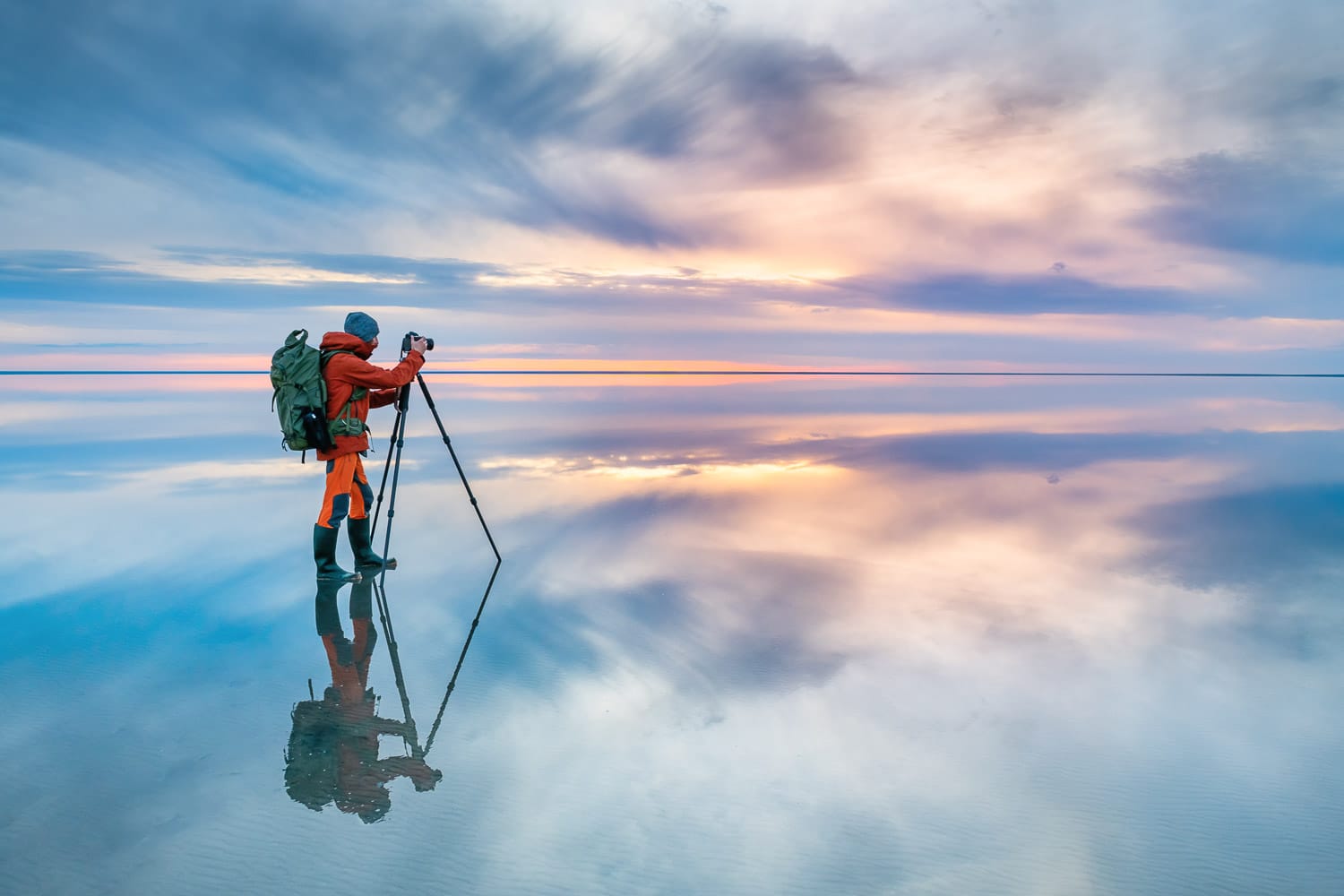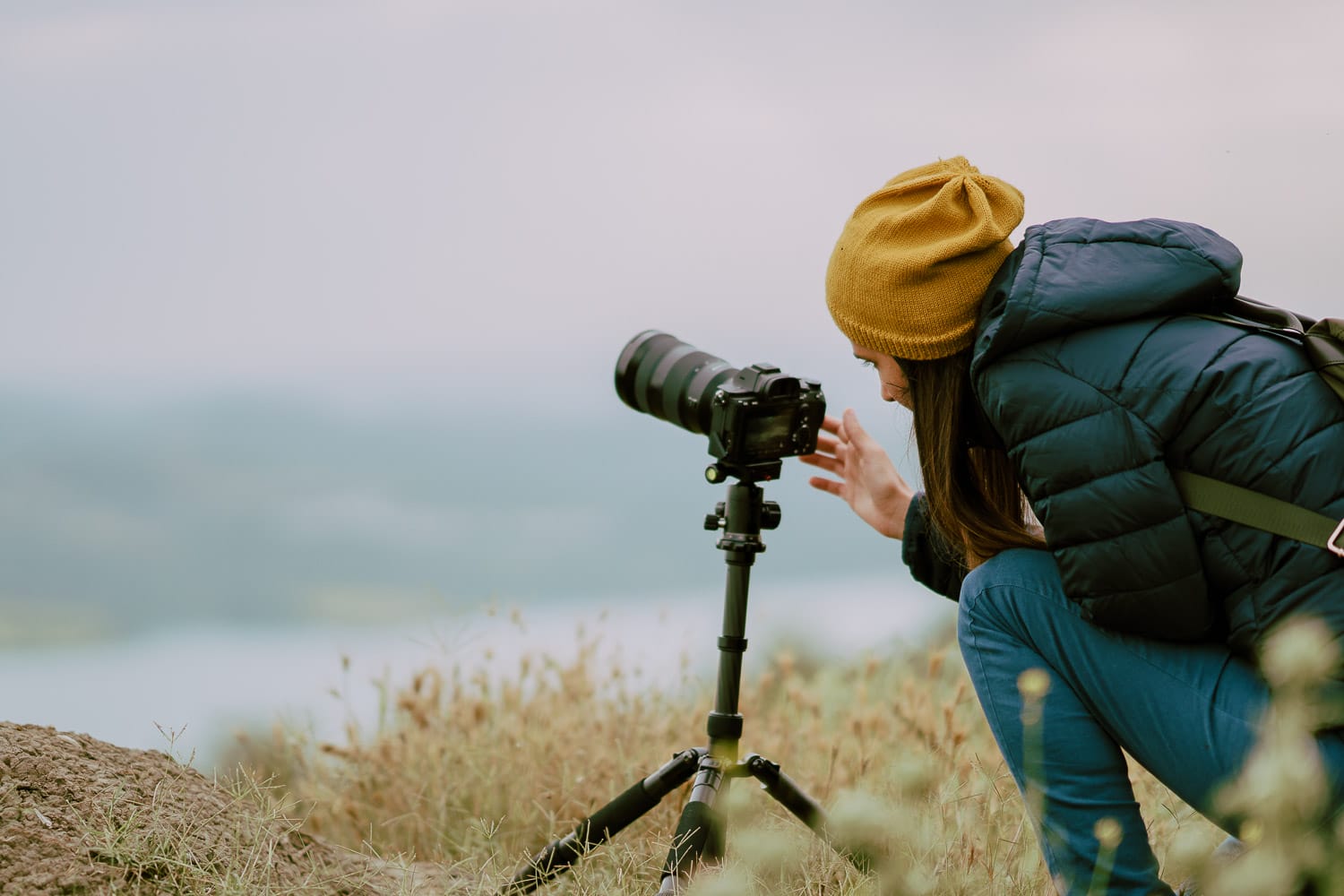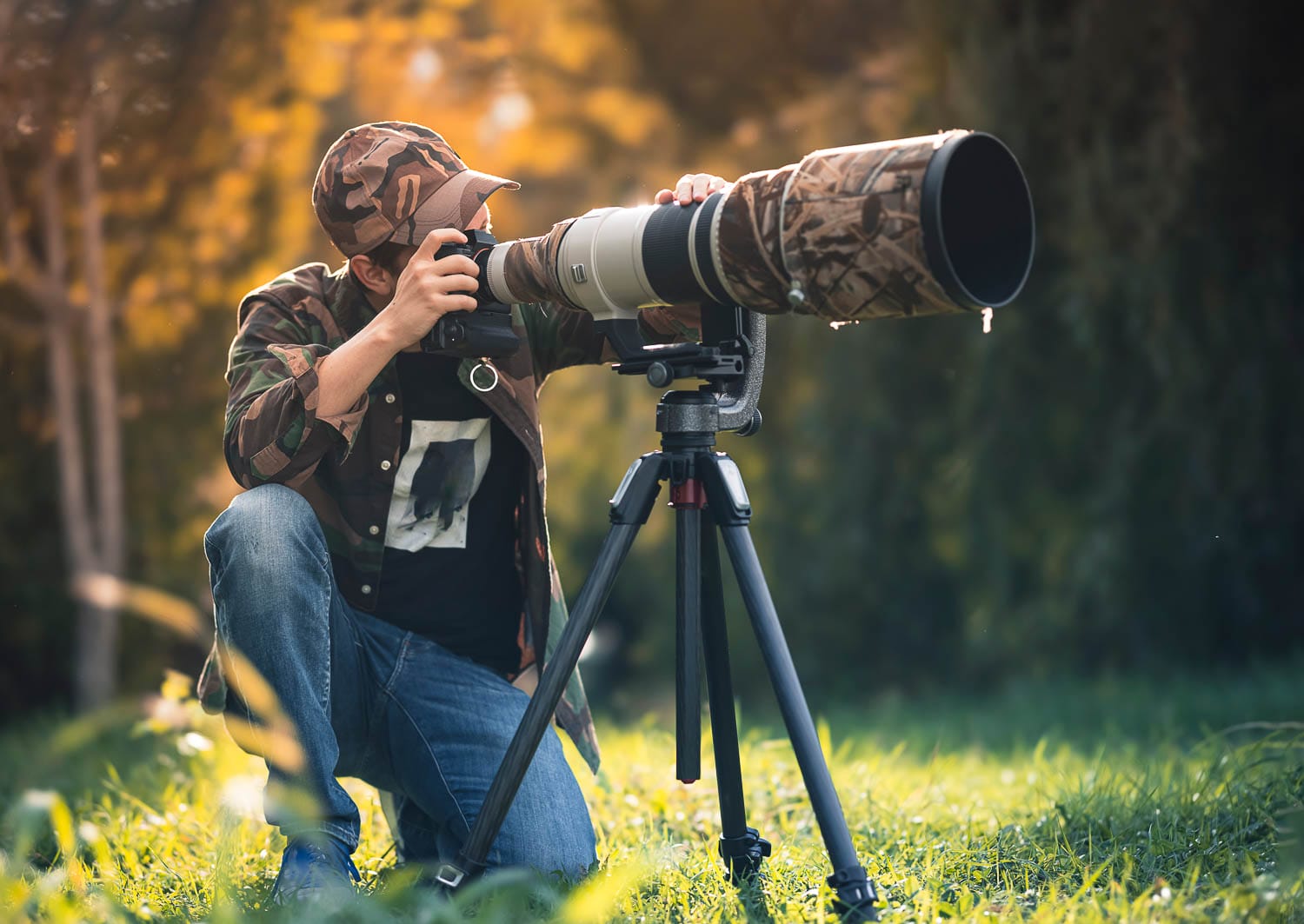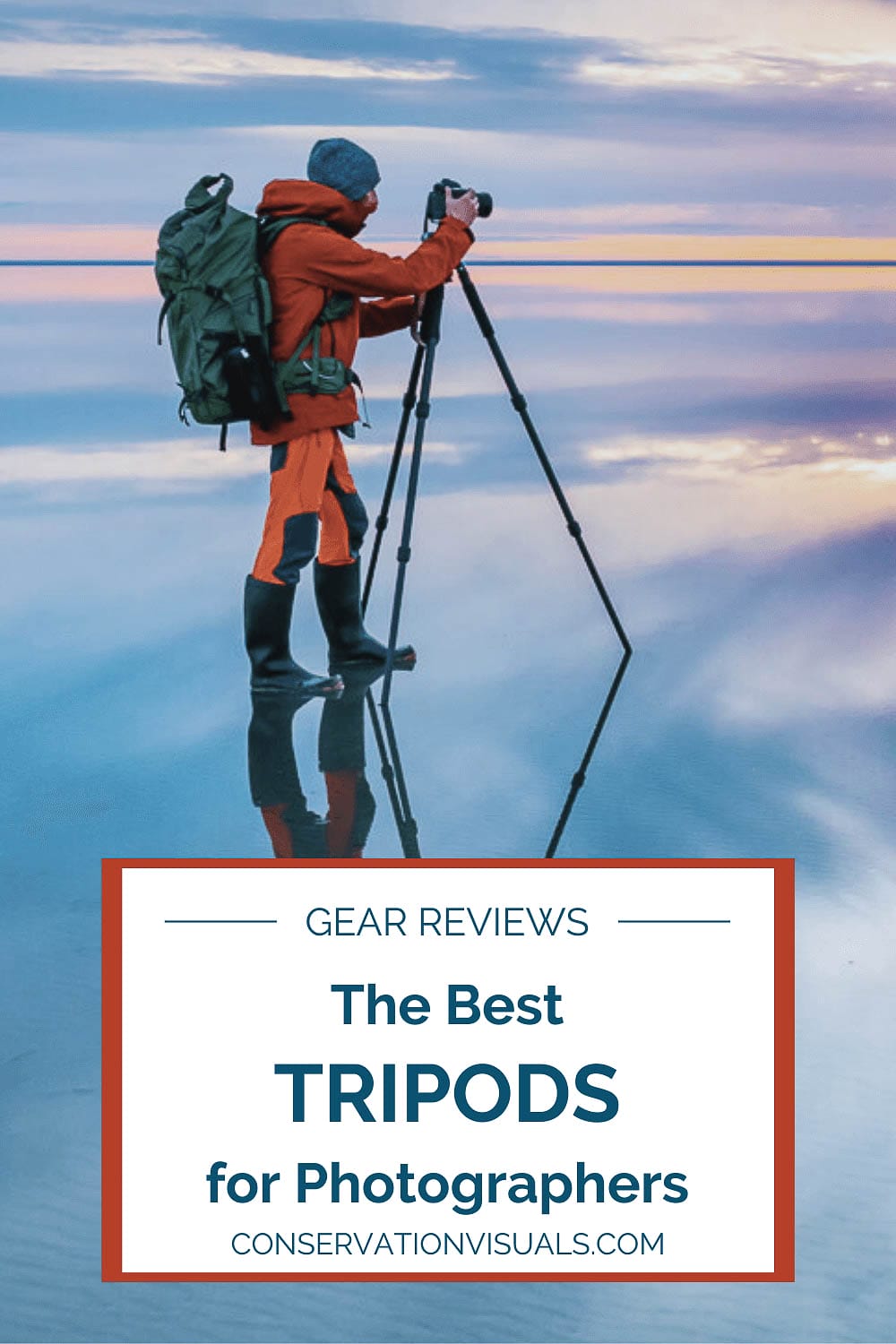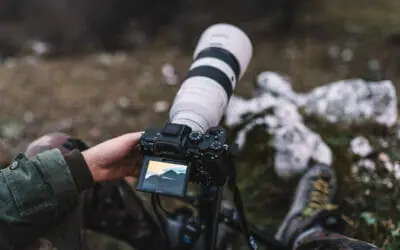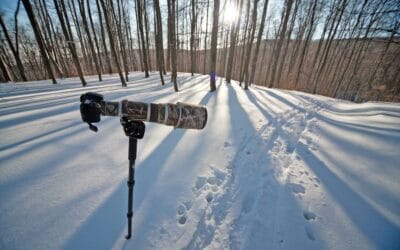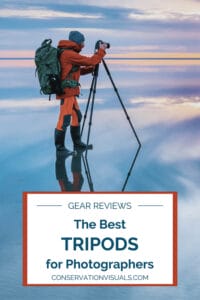Imagine you're in a forest. The sun is setting and there's a great gray owl perched on a tree branch. You need to capture this moment, but it's getting darker, and you have to lower your shutter speed. Hand-held, you'll probably end up with a blurry photo.
But you left your tripod at home so you're out of luck.
Then, you hear a rustling in the shrubs behind you, startled you turn your head. Out walks…a tripod. Wait, what?
Never mind, this isn't a steampunk fantasy. This is the real world, and in the real world of wildlife photography, you need to pack a tripod. And not just any tripod – one that's truly up to the task.
Keep reading and we'll help you pick your best tripod for wildlife photography.
Contents
- Why even bother with a tripod?
- How we picked the best tripods
- Gitzo GT3543XLSUS Systematic Tripod
- Manfrotto 055 Tripod with Horizontal Column
- Robus RC-5570 Vantage Series 3 Tripod
- Benro Mach3 Long Series 3 Tripod
- SIRUI AM-324 Professional Tripod
- Key tripod features to consider
- An overview of tripod heads
Our picks at a glance
Why use a tripod
While considered an essential tool in landscape photography, tripods are also an excellent assistant in all types of nature photography.
For wildlife photographers, tripods come in particularly useful for bird photography, for capturing shots of quickly moving wildlife or wildlife you need to wait hours to see.
And of course, for photographing in low light before the sun has risen or as it's beginning to set.
It's not just a professional wildlife photographer who needs to have a super-solid foundation for shots. So if you're a hobbyist who's wondering if you REALLY need a tripod, the answer is… yep!
A tripod stabilizes your camera, keeping it level and steady, absorbing movement and reducing the risk of blurry final photos.
Sure, you could spend a few hours building a cairn of exactly the right height in exactly the right position to set your camera on, but who has time for that when the warbler you've been watching could take off at any moment?
With your camera securely attached to a tripod, you increase your chances of capturing sharp images and free up your hands.
Ever tried changing lenses or filters while holding your camera? It's not ideal.
Plus, when you use a tripod for wildlife photography you can take your time to compose the shot – step back, squint, tilt your head, and do all the strange photographer dance moves to ensure you've got the perfect frame.
Photo: Olga Gavrilova/Shutterstock
How we picked the best tripods for nature and wildlife photography
We at Conservation Visual Storytellers Academy have extensive experience in nature and wildlife photography. Our writers and editors use the major camera systems available and have decades of experience in the field.
To choose the best recommendations for you, we combine personal experience, insights from fellow pros and industry experts, editorial and user reviews, and details from manufacturers. We carefully weigh the pros and cons of each item and put only what we feel is the best selection available into our recommendation guides.
We've curated a selection of tripods to meet the needs of different photography goals and budgets. Factors we consider include weight capacity, versatility, durability, portability, and more features that help you find the right tripod for wildlife photography.
For advice on what to consider in a wildlife photography tripod and how to choose the right one for you, use the table of contents to jump to those sections.
Our Reviews & Recommendations
Gitzo GT3543XLSUS Systematic Tripod
- Verrrrrry impressive payload
- To say it's study seems like an understatement
- Broad height range - ideal for taller folks and low shots
- That Gitzo quality build and thoughtful engineering
- Pricey (but worth the long-term investment if you can swing it)
- Closed length is the longest on our list (but still completely manageable)
SPECIFICATIONS
- Material: Carbon fiber
- Leg Sections: 4
- Leg Lock: Twist lock
- Column: No
- Height Range: Up to 79.5″
- Closed Length: 28″
- Safety Payload: 61.7 lbs
- Weight: 5.1 lbs
WHAT WE THINK
We're consistently impressed by Gitzo and this tripod does not disappoint.
Personally, this is our favorite tripod as we have zero hesitation loading it up with the heaviest super telephoto lenses and camera combos. The amount of weight this dude can handle is im-press-ive. It can easily support:
Heavy cameras! Heavy lenses! Long lenses! Without flinching.
And, even with all that strength, it's still lightweight and folds up compactly enough to pack up for a backcountry photo trip.
Carbon eXact tubes provide excellent stability and rigidity and the ultra-stable feet ensure a secure grip on various terrains – it's able to hold its own no matter where you bring it.
Gitzo's Systematic range is modular, allowing you to customize your setup for however and whatever you're shooting.
Instead of a central column, it features a flat top plate design, which is perfect for ground-level shooting.
Plus, the top casting element opens and closes, also allowing for the configuration of a geared or sliding center column, video half-ball adapter, leveling base, or other accessories.
While it may seem a bit pricey, with quality and versatility like this, it's worth every penny for photographers who demand the best equipment.
BEST PRICES
Manfrotto 055 Tripod with Horizontal Column
- Durable and built to last
- Versatile shooting options
- Sturdy, rigid legs with secure locks
- Center column can extend horizontally
- If a center column isn't your jam, go with a different option
SPECIFICATIONS
- Material: Carbon fiber
- Leg Sections: 3
- Leg Lock: Flip lock
- Column: Yes
- Height Range: Up to 66.9″
- Closed Length: 24.8″
- Safety Payload: 44.1 lbs
- Weight: 4.6 lbs
WHAT WE THINK
While we don’t prefer a center column for wildlife photography, this Manfrotto is an excellent wildlife tripod for those who do.
With quick one-finger operation, the column can be extended vertically or horizontally, providing impressive shooting versatility.
That combined with its four leg angles, allow photographers to reach virtually any shooting position.
Adding to that versatility is the Easy Link connector, which allows photographers to attach an extending arm or bracket.
We also really appreciate the upper disk with a rotating bubble level which can freely rotate around the center column, allowing photographers to level their camera on all planes, ensuring accurate and straight compositions, even on uneven terrains.
Three leg sections rather than four enhance its stability (while still packing down relatively short) and “Quick Power” flip lock leg locks make it easy to set up and adjust to different heights and shooting angles.
The stability offered by the legs are aided by its carbon fiber construction that's not only lightweight but also incredibly rigid, ensuring stability even when loaded up with over 40 lbs of equipment.
BEST PRICES
Robus RC-5570 Vantage Series 3 Tripod
- Sturdy, durable build that can handle a serious load
- Second only to Gitzo in height range
- Relatively compact build for what it can handle
- Center column option for those who prefer one
- On the heavier end
SPECIFICATIONS
- Material: Carbon fiber
- Leg Sections: 4
- Leg Lock: Twist lock
- Column: Not included, but sold separately
- Height Range: Up to 70.1″
- Closed Length: 25.4″
- Safety Payload: 55 lbs
- Weight: 5.6 lbs
WHAT WE THINK
The heaviest on our list (granted, by only half of a pound), this Robus holds an impressive amount of weight – about ten times what it weighs.
That 55 lb max load is more than sufficient to support a heavy lens and camera setup and even a stabilizing counterweight.
Even in high wind conditions, the legs remain steady and secure, without any vibrations.
The tripod offers maximum stability even at its full height, thanks to the leg angle locks that ensure a firm connection between the leg sections, providing a solid and stable base.
Included interchangeable feet allow photographers to quickly and easily swap between rubber feet, wide feet, and steel spikes depending on the terrain.
Its interchangeable flat plate and video bowl allows photographers to use different types of camera heads depending on their shooting preferences and needs.
Those components, plus the chassis, are made of CNC-machined aircraft-grade aluminum, adding to its overall strength and stability.
The tripod also allows for dynamic low-angle shots, with leg angle locks that can be adjusted to an 85° angle.
Additionally, a center column is available separately, providing an extra 14.75″ of height.
BEST PRICES
Benro Mach3 Long Series 3 Tripod
- Impressive max height with compact pack length
- Balances budget with performance
- Sturdy and secure construction
- Short center column included
- A bit heavy for the payload
SPECIFICATIONS
- Material: Carbon fiber
- Leg Sections: 4
- Leg Lock: Twist lock
- Column: Short column included
- Height Range: Up to 69.7″
- Closed Length: 23.2″
- Safety Payload: 35.3 lbs
- Weight: 4.5 lbs
WHAT WE THINK
The Benro Mach3 offers a fantastic balance between weight and size, rivaling the Sirui in these aspects.
This slightly higher weight and length are likely due, at least in part, to it providing about 10″ more of height and including a short column designed for ground level and low-angle shots.
To achieve its lightweight design, the Benro Mach3 incorporates magnesium castings and the legs are constructed from 9 layers of carbon fiber, further enhancing its sturdiness while keeping the weight to a minimum.
For added stability in various terrains and shooting conditions, it comes with interchangeable rubber feet and stainless steel spiked feet.
And, for added user comfort, it's equipped with high-performance rubber twist locks that not only provide improved ergonomics but also offer resistance to the elements.
With its versatility, stability, and lightweight design, this guy makes a reliable and sturdy photography companion.
BEST PRICES
SIRUI AM-324 Professional Tripod
- Ball head included
- Lightweight design
- Super compact pack length
- Exceptional value
- Not the best option for those needing height
SPECIFICATIONS
- Material: Carbon fiber
- Leg Sections: 4
- Leg Lock: Flip lock
- Column: No
- Height Range: Up to 60.4″
- Closed Length: 21.7″
- Safety Payload: 39.7 lbs
- Weight: 3.9 lbs
WHAT WE THINK
If you're looking for a reeeally good tripod at a reeeeeeeeeally good price, this Sirui is it.
With exceptional build quality and sturdy design, this relatively compact guy can hold nearly 40 lbs of gear – again, ten times its own weight. Impressive.
Its no-center-column design makes the tripod more compact and portable, while allowing for ultra-low or macro shooting. We love this for when we're hiking out to shoot. Plus, it's super simple to set up and the metal twist locks embedded with anti-slip rubber pads make it extra secure once it's there.
Here's the kicker though: it comes with a ball head, which features a 40mm ball and a low gravity design for better stability and higher load capacity.
The ball head has a damping knob that allows you to control the friction of the ball and achieve 360° smooth movement for shooting wildlife images.
Not only that, but it comes with the option of anti-slip rubber feet or metal spikes to provide stability no matter the surface.
With its impressive compact build, included ball head, and versatile shooting options, this Sirui is a great balance between performance and affordability.
BEST PRICES
Recommended: Strap that tripod to something comfortable to carry! Here are our recommendations on camera bags for the adventurers: Best Camera Backpacks for Hiking!
Photo: sondem/Shutterstock
Key tripod features to consider
❂ Stability
The top consideration when picking out a wildlife tripod or any tripod is – shock of shocks – stability.
Look for strong, sturdy tripod legs that can easily handle the weight of your gear while being portable enough to accompany you wherever you're shooting.
The balance there is that with more leg sections, the tripod packs up smaller and is easier to transport. Buuuuuut, the more leg sections, the less stable it can be.
Stability is also impacted by the presence of a center or central column.
Some tripods offer an adjustable center column. However, a center column can get in the way when trying to get a low-angle shot.
Plus, tripods without a center column are typically more stable than those with one.
Then why bother with one?
Well, center columns can increase versatility. They're perfect for adding a bit extra height for a tripod that's compact when folded up. Though, personality, it's not a trade-off that's particularly worthwhile in wildlife photography when you know you'll frequently want ground-level shots.
Another piece of the tripod anatomy that impacts stability are the feet.
Tripods typically come with rubber or spiked feet, but there are also tripods that allow photographers to change out the foot type depending on the terrain so that your gear remains steady and grounded.
❂ Weight capacity
Make sure your tripod has a load capacity that can bear the weight of your camera with, say, an attached super telephoto lens without flinching.
Both tripod legs and tripod heads have max weight capacities. Determine the total weight of your gear, then, just to be safe and to give you room for changes to your kit, go with a max payload that's at least double that.
❂ Height
Consider how tall you are and the height range you plan to shoot at. You don't want to be hunched over for extended periods fretting about needing to get into the chiropractor post-shoot rather than focusing on the frame.
With your camera attached to a head, what's the distance below that where you can comfortably look through the viewfinder? At minimum, go with that.
❂ Adjustable
Make sure it's adjustable so that you can get just the right angle for your shots and that adjusting it is relatively quick and easy.
You want a tripod that sets up fast, but you also want it to remain sturdy.
Flip locks are quick, but over time require tightening; twist locks aren't as *snappy* but don't require maintenance.
❂ Materials
Most tripods are made of aluminum or carbon fiber. The aluminum tripod is cheaper but heavier, while carbon fiber tripods are lighter and sturdier, but also pricier.
If you can swing it, go with a carbon fiber tripod. Personally, it's the only material I'll consider.
Photo: MAD.vertise/Shutterstock
An overview of tripod heads
Let's take a short segue into tripod heads. While not typically included with a tripod, picking the right tripod head for wildlife photography is just as important as picking the right tripod (or monopod for that matter).
The tripod head is where your camera is mounted. It controls the camera's orientation, allowing you to tilt, rotate, and pan your camera with precision and ease.
As you might imagine, the best tripod head is going to be the one that best supports – literally and figuratively – your camera and lens combo and the style of photography you're after.
Here's a rundown of the different types of tripod heads:
❂ Gimbal head
If you're wielding a hefty super telephoto lens for those far-off shots, gimbal heads are your best bet. Gimbal heads are designed to support heavy gear, and balance it perfectly, so the camera feels virtually weightless.
A gimbal head is a magnificent piece of engineering and perfect for bigger lenses and quick, unpredictable subjects. We really love the Wimberley WH-200.
❂ Ball head
Versatile, compact, and easy to use, ball heads use a ball and socket mechanism that allows for rapid movement in almost all directions. Once you've found your perfect position, you can lock the ball in place with a quick twist of the knob.
Ball heads are incredibly versatile and easy to use, and are perfect if you're photographing with a shorter lens that doesn't need the extra support of a gimbal.
Of course, if you want the flexibility of having both a gimbal and ball head with you, you can always consider packing a Wimberly Sidekick. This converts a sturdy ball head into a gimbal-type mount.
I've been using the same Wimberley WH-200 gimbal as well as the same Wimberly Sidekick with the same Really Right Stuff BH-55 ball head since 2010 (without mercy!) and they're all still in perfect working order after all these years. Incredible build quality!
❂ Pistol grip head
A variation of the ball head is the pistol grip tripod head. This head type uses a trigger-style grip that is super simple to use, but isn't typically ideal for wildlife photography as they tend to have a relatively low weight capacity that aren't intended to support the heavier lenses we wildlife photographers use.
❂ Pan-and-tilt head
Also known as a three-way tripod head, this head attachment uses separate controls for each axis (horizontal, vertical, and panning), so you can adjust each one independently and precisely. It's a bit bulky and more cumbersome than, say, a ball head, and is better suited for landscape photography than as a tripod head for wildlife photography.
❂ Geared head
A type of the pan-and-tilt tripod head, this head type uses gears to move the head attachment very precisely around one axis. As a type of pan-and-tilt tripod head, these are pretty hefty and slow so aren't necessarily the best tripod for wildlife photography, but work well for architectural and landscape shooting.
❂ Fluid head
The fluid head uses hydraulic fluid to dampen movement, providing an incredibly smooth pan and tilt motion. A fluid head mostly used for video, but as a tripod head for wildlife photography, it can be great for capturing majestic, slow-motion shots of wild animals.
Recommended: Check out our gear guides for what to put ON your fancy new tripod:
- Best cameras for wildlife photography, for landscape photography, and for bird photography
- Best lenses for wildlife photography, for landscape photography, and for bird photography







